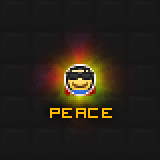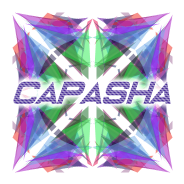Official Everybody Edits Forums
Do you think I could just leave this part blank and it'd be okay? We're just going to replace the whole thing with a header image anyway, right?
You are not logged in.
- Topics: Active | Unanswered
Pages: 1
#1 2018-07-28 08:18:37
- Anatoly
- Guest
Anti-Troll Bot, maybe?
Anyone got ideas?
#2 2018-07-28 12:03:33
- Tomahawk
- Forum Mod

- From: UK
- Joined: 2015-02-18
- Posts: 2,847
Re: Anti-Troll Bot, maybe?
A single block can troll a level.
Atilla made something against classical trolling. Idk how well it works.
One bot to rule them all, one bot to find them. One bot to bring them all... and with this cliché blind them.
Offline
#3 2018-07-28 12:42:42, last edited by peace (2018-07-28 12:43:06)
- peace
- Member

- From: admin land
- Joined: 2015-08-10
- Posts: 9,226
Re: Anti-Troll Bot, maybe?
if blockplacement is faster then X then warning if Y warnings then kick
EDIT wanrings could be in removign edit for Z seconds

thanks hg for making this much better and ty for my avatar aswell
Offline
#4 2018-07-28 12:42:49
- capasha
- Member

- Joined: 2015-02-21
- Posts: 4,066
Re: Anti-Troll Bot, maybe?
I have a better idea. Don't make code or edit worlds.
Offline
#5 2018-07-28 13:02:20
- Nebula
- Guest
Re: Anti-Troll Bot, maybe?
I think there is already one that goeyfun made but it have malicious viruses
#6 2018-07-28 13:58:40
- capasha
- Member

- Joined: 2015-02-21
- Posts: 4,066
Re: Anti-Troll Bot, maybe?
I think there is already one that goeyfun made but it have malicious viruses
He took the code from atilla.
Offline
#7 2018-07-28 14:42:35
- TaskManager
- Formerly maxi123

- From: i really should update this
- Joined: 2015-03-01
- Posts: 9,465
Re: Anti-Troll Bot, maybe?
if blockplacement is faster then X then warning if Y warnings then kick
EDIT wanrings could be in removign edit for Z seconds
and what if im simply trying to draw walls for my house or fill it with background?
that method is very prone to false positives
Offline
#8 2018-07-28 16:56:17
- hummerz5
- Member

- From: wait I'm not a secret mod huh
- Joined: 2015-08-10
- Posts: 5,853
Re: Anti-Troll Bot, maybe?
Could we legitimately add AI to this? Some sort of machine learning? What sort of metrics would we need? Obviously the end result would be "Trolling? Y/N" for training. We could analyze... average speed of block placement... eraticness of user movement... maybe even some ad hominem like how long the user has been in the world... whether or not they were placing on existing blocks...
of course, you also run into the issue of abstraction: where do you cross the line between helping me work on my art and just wrecking it by being creative with MY stuff? The overlap here makes a passive observation system rather unlikely in my opinion
Offline
#9 2018-07-28 17:22:05
Re: Anti-Troll Bot, maybe?
If neural networks can do things like telling the difference between cats and dogs, I'm sure they can probably tell the difference between trolling and building ![]()
The great thing about neural networks is that you don't need to actually know how it would do it, things like placement speed, eraticness, previous contributions in the world, etc. would all be done internally, with the network deciding which it gives the most weight to. You just feed in a huge amount of data, and it decides whats important, what it needs to calculate, what actually matters, and so on.
I guess its just a question of how much data it would need to train it... If its more than a week or so in a free edit world then its probably not worth it ![]()
Offline
#10 2018-07-28 17:34:50
- hummerz5
- Member

- From: wait I'm not a secret mod huh
- Joined: 2015-08-10
- Posts: 5,853
Re: Anti-Troll Bot, maybe?
I guess its just a question of how much data it would need to train it... If its more than a week or so in a free edit world then its probably not worth it //forums.everybodyedits.com/img/smilies/tongue
hah, yeah. Sitting around the clock, telling the system exactly which blocks are infringing... that'd be boring.
However, if I understood our trip with Neural Nets and WEKA, you still need to somehow give that information. I agree, you don't need to specify thresholds or probabilities or much of anything strictly related to the data itself, but you do need to determine what you want to include. So I believe you would need to have your listening program keeping track of all that information. I suppose at its simplest, you'd need to plug in the x/y/block ID/user ID of every placement... and a timestamp... and finally whether or not the block was considered trolling.
Now, that's a bit more theoretical, but wouldn't we help train the neural net if we did include metrics we thought relevant? Or would that just confuse it? That way, if there's a pattern to be found with timing, it'd be more clear by having a "time since last placement" or something as a very obvious field for the AI to latch onto.
But my particular problem with this still goes back to the fact that we as humans need to supply it with concrete differences. We all know cats aren't dogs. But where do you draw the line regarding something as fundamental as "No, I don't want your help"?
Offline
#11 2018-07-28 17:42:56
- TaskManager
- Formerly maxi123

- From: i really should update this
- Joined: 2015-03-01
- Posts: 9,465
Re: Anti-Troll Bot, maybe?
LukeM wrote:I guess its just a question of how much data it would need to train it... If its more than a week or so in a free edit world then its probably not worth it //forums.everybodyedits.com/img/smilies/tongue
hah, yeah. Sitting around the clock, telling the system exactly which blocks are infringing... that'd be boring.
However, if I understood our trip with Neural Nets and WEKA, you still need to somehow give that information. I agree, you don't need to specify thresholds or probabilities or much of anything strictly related to the data itself, but you do need to determine what you want to include. So I believe you would need to have your listening program keeping track of all that information. I suppose at its simplest, you'd need to plug in the x/y/block ID/user ID of every placement... and a timestamp... and finally whether or not the block was considered trolling.
Now, that's a bit more theoretical, but wouldn't we help train the neural net if we did include metrics we thought relevant? Or would that just confuse it? That way, if there's a pattern to be found with timing, it'd be more clear by having a "time since last placement" or something as a very obvious field for the AI to latch onto.
But my particular problem with this still goes back to the fact that we as humans need to supply it with concrete differences. We all know cats aren't dogs. But where do you draw the line regarding something as fundamental as "No, I don't want your help"?
how necessary is the block ID in this data?
a long list of X/Y/time since last block placement imo would be enough
"and finally whether or not the block was considered trolling."
you mean feed this into the system? is that for teaching purposes, to tell the network "look at these blocks with timestamps yes this is trolling i tell ya"
Offline
#12 2018-07-28 17:47:00
- hummerz5
- Member

- From: wait I'm not a secret mod huh
- Joined: 2015-08-10
- Posts: 5,853
Re: Anti-Troll Bot, maybe?
how necessary is the block ID in this data?
Actually, good point. That's probably irrelevant. There could be something to be said about block similarities and how they'd be more likely to not be trolling... but for our purposes I think that is far too minor of a nuance to actually be able to profit from sending through an AI.
you mean feed this into the system? is that for teaching purposes, to tell the network "look at these blocks with timestamps yes this is trolling i tell ya"
Yes, you'd need to tell it what tests positive and negative. Otherwise it has no grounds for prediction.
Offline
#13 2018-07-28 17:58:38
Re: Anti-Troll Bot, maybe?
I guess theres two ways you could go about doing this, the first is to feed it the whole world, and it detects which blocks are from trolling (using a convolutional neural network similar to image processing AIs), and the second is to feed it a list of recent placements, and it predicts whether that person is trolling or not (using a recursive neural network similar to predictive typing algorithms).
With the first way it would be getting a lot more data, so could become more accurate, and in that case things like IDs would be important for detecting things like whether they are filling in a large area for example, or maybe detecting that things like coins shouldn't be placed in large numbers.
With the second way, there wouldn't be any way to input the original world data, in which case ID wouldn't really matter. This would probably be the simplest to make, but would also probably also be the most prone to error (as it has a lot less data to work with). As for which would be faster to train, I'm not sure ![]()
Offline
#14 2018-07-28 18:09:14
- hummerz5
- Member

- From: wait I'm not a secret mod huh
- Joined: 2015-08-10
- Posts: 5,853
Re: Anti-Troll Bot, maybe?
I hadn't thought about the idea of relative placement or stuff like that. I.e., a field of coins with three keys. That would be a good way to train, but we'd still need to go in and manually do a good chunk of world data... and that'd require either making and trolling a bunch of worlds or finding someone who has a ton already saved (??). That sounds like a good idea, though we'd probably run into a false positive where technically anything added to an empty world would be trolling. But eh, philosophy.
The coin example makes sense to earmark, though I wonder if it isn't relevant in both cases? A person who is adding a lot of coins live would be just as more likely to be trolling, I'd say.
The way I see it, let's find a potential model that works before we go around talking about real-world problems like training time. lol
Our class didn't really focus on the image processing side of things, just piecemeal pattern determination to help find decision-making rules. So naturally I'd tend toward the second rule as I have no understanding of the first.
Offline
#15 2018-07-28 19:27:05
- Tomahawk
- Forum Mod

- From: UK
- Joined: 2015-02-18
- Posts: 2,847
Re: Anti-Troll Bot, maybe?
Sounds like far too much work for limited results. Like I said; no troll detection can be 100% effective when a player with edit can place or remove a single block and ruin a minigame level. All that happens is the trollers get smarter.
Far more useful is to store the maps’s edit history and add a bunch of functionality around that, such as undoing the last 10 seconds of a player’s editing. I’m imagining something like a bunch of minimaps that display each player’s edits separately, allowing an intelligent human user to “detect” troll manually.
One bot to rule them all, one bot to find them. One bot to bring them all... and with this cliché blind them.
Offline
#16 2018-07-28 19:48:26
- SirJosh3917
- Formerly ninjasupeatsninja

- From: USA
- Joined: 2015-04-05
- Posts: 2,095
Re: Anti-Troll Bot, maybe?
better idea: let users claim sections of land to edit
pros:
1) much easier
2) better results
3) more confident chance of something being a troll
cons:
1) limiting area to prevent people from claiming the entire world
2) limiting area, limiting creativity
3) limiting area based on how long they've been online, leading to afk trolls claiming the world again
Offline
#17 2018-07-28 20:30:26
- TaskManager
- Formerly maxi123

- From: i really should update this
- Joined: 2015-03-01
- Posts: 9,465
Re: Anti-Troll Bot, maybe?
Sounds like far too much work for limited results. Like I said; no troll detection can be 100% effective when a player with edit can place or remove a single block and ruin a minigame level. All that happens is the trollers get smarter.
Exactly, I prefer trolling by changing all portal ids to 0, changing sign text and setting up spawn traps ![]()
Offline
#18 2018-07-28 20:43:47
- capasha
- Member

- Joined: 2015-02-21
- Posts: 4,066
Re: Anti-Troll Bot, maybe?
Tomahawk wrote:Sounds like far too much work for limited results. Like I said; no troll detection can be 100% effective when a player with edit can place or remove a single block and ruin a minigame level. All that happens is the trollers get smarter.
Exactly, I prefer trolling by changing all portal ids to 0, changing sign text and setting up spawn traps
Spawn protection maybe? ![]()
Offline
#19 2018-07-28 21:21:34
- hummerz5
- Member

- From: wait I'm not a secret mod huh
- Joined: 2015-08-10
- Posts: 5,853
Re: Anti-Troll Bot, maybe?
TaskManager wrote:Tomahawk wrote:Sounds like far too much work for limited results. Like I said; no troll detection can be 100% effective when a player with edit can place or remove a single block and ruin a minigame level. All that happens is the trollers get smarter.
Exactly, I prefer trolling by changing all portal ids to 0, changing sign text and setting up spawn traps
Spawn protection maybe?
Or we could go back to the foundations of democracy and allow the wisdom of the masses to attempt to regulate when a person is trolling or otherwise detrimental to the world... /s?
Offline
#20 2018-07-28 21:51:07
- XxAtillaxX
- Member

- Joined: 2015-11-28
- Posts: 4,202
Re: Anti-Troll Bot, maybe?
I initially wrote a **** tool to combat trolling in free edit worlds. Surprisingly enough, it worked far more decently than I had anticipated.
As mentioned, it worked for classical trolling, although there were obviously ways to evade detection, especially if you knew the parameters involved in detection, which is pretty much a given when the source code is out there.
The primary parameters for detection included block placement rates, block overwrite rates, as well as player movements, which weren't strictly necessary given movements could be filtered and it isn't worth invalidating the entire detection for a single variable.
I logged each block placement unique to the user who had placed it, and allowed myself and other trusted users to use a command, 'revert' which optionally took a duration parameter and, as the name implies, reversed the changes the user made to the world.
I think a better approach would to be taking periodic snapshots and allowing the world managers to specify which blocks to revert with some interface reminiscent of some 'git diff' functionality, but that'd be far too convoluted in my opinion, especially when a simple command suffices. I'd say the same about introducing artificial intelligence into the equation.

*u stinky*
Offline
#21 2018-07-30 13:24:40
Re: Anti-Troll Bot, maybe?
You don't need weeks, you could just have a bot connected to free edit worlds and ask people to flag trolls. And as for the learning part, we could share processing to learn different epochs (although I'm not exactly sure how that would work)
Offline
#22 2018-07-30 13:56:53
- Anatoly
- Guest
Re: Anti-Troll Bot, maybe?
I've read some posts there. Some where good. Some where... bad. My idea would be to start from defining a troll, and what is not a troll.
Troll looks like snakes and is the spam of blocks with the purpose to 1 destroy other's block. It's 2 speed of placed blocks is usually high, and (2) the amount of placed blocks is also very high.
So we need to see if something is a purpose to create a box (linear placing, but still fast enough, so 2 is not the case.)
Then if someone clears the drawing to make himself place. (If the author of the drawing left, 1 means removing in this case)
However if someone fills content with background (it would be the opposite of 3).
So we need to find a system which combines 1, 2 and 3, right?
#23 2018-07-30 14:20:57
- TaskManager
- Formerly maxi123

- From: i really should update this
- Joined: 2015-03-01
- Posts: 9,465
Re: Anti-Troll Bot, maybe?
TaskManager wrote:Tomahawk wrote:Sounds like far too much work for limited results. Like I said; no troll detection can be 100% effective when a player with edit can place or remove a single block and ruin a minigame level. All that happens is the trollers get smarter.
Exactly, I prefer trolling by changing all portal ids to 0, changing sign text and setting up spawn traps
Spawn protection maybe?
who said i have to edit the spawn to screw it up lol
just place dozens of spawn blocks somewhere far away and build a lava room around them ![]()
Offline
#24 2018-07-30 15:53:44
- hummerz5
- Member

- From: wait I'm not a secret mod huh
- Joined: 2015-08-10
- Posts: 5,853
Re: Anti-Troll Bot, maybe?
I've read some posts there. Some where good. Some where... bad. My idea would be to start from defining a troll, and what is not a troll.
Troll looks like snakes and is the spam of blocks with the purpose to 1 destroy other's block. It's 2 speed of placed blocks is usually high, and (2) the amount of placed blocks is also very high.
So we need to see if something is a purpose to create a box (linear placing, but still fast enough, so 2 is not the case.)
Then if someone clears the drawing to make himself place. (If the author of the drawing left, 1 means removing in this case)
However if someone fills content with background (it would be the opposite of 3).So we need to find a system which combines 1, 2 and 3, right?
What you're defining seems to answer your own question. If you see those to be the concrete reasons that define when a person is trolling, you don't really need any fancy "system." You could just write those in a relatively painless manner.
of course, then task manager will still use their fancy pants methods. And your "have they left yet?" parameter means that no one can help another person.
Offline
Pages: 1
[ Started around 1732684706.1793 - Generated in 0.209 seconds, 13 queries executed - Memory usage: 1.77 MiB (Peak: 2.04 MiB) ]

